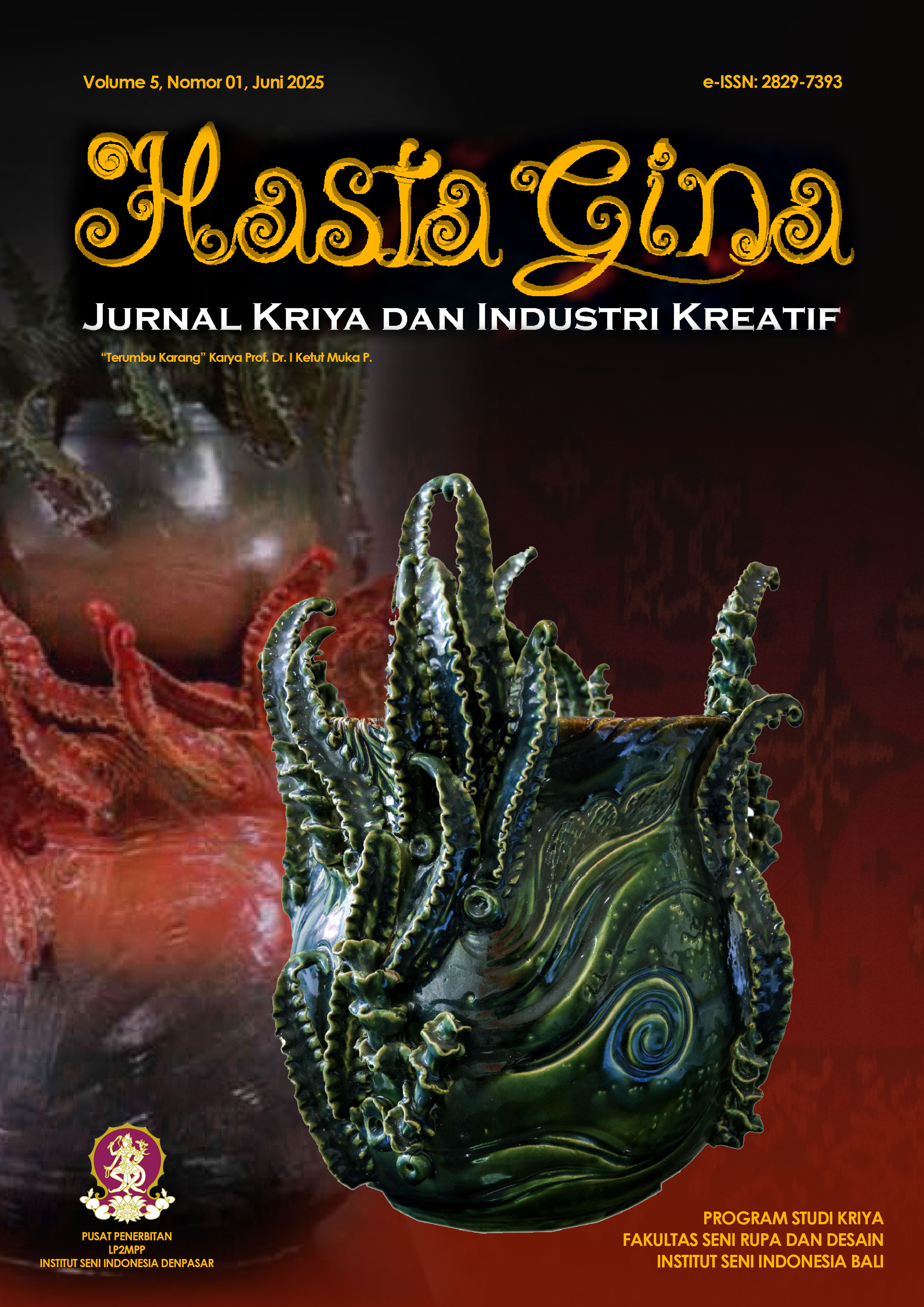Development of Combined Floral Motif Batik Using Stamp and Hand-Drawn Techniques for Jarit
Pengembangan Batik Kombinsai Motif Flora dengan Teknik Cap dan Tulis untuk Jarit
DOI:
https://doi.org/10.59997/hastagina.v5i01.1617Keywords:
Combination Batik, Flora, JaritAbstract
This creative project aims to develop modern batik motif designs through a combination of cap (stamp) and tulis (hand-drawn) techniques. The main focus lies in visually exploring floral motifs by reactivating unused batik cap stamps owned by artisans objects that hold strong formal potential for contemporary reinterpretation. The final product takes the form of a long batik cloth (jarit), targeting a younger demographic actively using batik in both formal and casual settings.
The creation method adopts a three-phase approach: exploration, design, and realization (Gustami, 2000). The exploration phase involved field studies of both cap and tulis batik processes, along with identification of floral forms from various stored stamps. The design phase utilized stylization and rearrangement techniques, supported by additional decorative elements known as isen-isen (small filler motifs), including cecek lima, tritis, uceng, kembang cengkeh, and others. The realization phase involved integrating both techniques cap as the primary motif and tulis as visual enrichments—combined with a three-color dyeing process using remazol: white (for the cap), brown (for the tulis), and black (for the background).
The final works feature long batik cloths with floral compositions that retain traditional roots while responding to modern-day demands for efficient production and accessible pricing. This project demonstrates that visual innovation in batik can occur without severing ties to its cultural heritage. Furthermore, it shows that recontextualizing dormant batik cap designs through combination techniques expands batik’s expressive possibilities, making it increasingly relevant for younger generations seeking both aesthetic value and cultural depth in contemporary textile design.


